 July 22, 2021 John E. Ross, KD8IDJ, Editor
| ||||||
Board Creates Emergency Communications and Field Services Committee At its just-concluded July 2021 meeting, the ARRL Board of Directors approved By-Law changes creating a third Standing Committee that joins the existing Administration and Finance Committee and Programs and Services Committee. The charter of the new Emergency Communications and Field Services Committee (EC-FSC) is to The committee also will offer enhanced support for its Field Organization leadership volunteers, including Section Managers, and an increased focus on ARRL-Affiliated Clubs. Further, the EC-FSC will provide guidance to the CEO in translating Board policy into prioritized tasking, funding, and staffing of programs, services, and training in support of amateur radio emergency communications, Field Organization volunteers, and recruitment and retention of new and existing members through assistance to Affiliated and Special Service Clubs. The EC-FSC will have the additional responsibility of monitoring and assessing trends in emergency communications technology and participant skills worldwide, and for identifying "best practices" for voluntary emergency communications provided by ARES and NTS, coordinating and cooperating with other amateur radio national societies as appropriate. -- Thanks to The ARES Letter Amateur Radio Responds to Flooding in Western Europe International Amateur Radio Union (IARU) Region 1 Emergency Communications Coordinator Greg Mossop, G0DUB, reported over the weekend that amateur radio volunteers have responded in the wake of widespread flooding in Germany, Belgium, and the
Netherlands. The flooding, resulting from unprecedented heavy rainfall, has claimed more than 120 lives. Hundreds more remain unaccounted for. The Dutch Amateur Radio Emergency Service (DARES) was on standby since July 14, as the first reports of flooding came in. An initial attempt to establish a point-to-point link from the provincial capital of Maastricht to the north of Limburg province was halted due to heavy traffic, as residents evacuated low-lying areas. DARES volunteers were in contact with members of the Belgian Emergency Amateur Radio Service (B-EARS) to coordinate their efforts. The European Civil Protection Mechanism was activated, and emergency groups across the region reported that their governments were sending extra assistance and supplies to the areas where damage was worst. The floodwater surge continued to make its way north, leading to further evacuations, and amateur radio emergency groups focused on requests for assistance. B-EARS was asked to provide a backup VHF link between the emergency call center in Brussels and the province of Hainaut, while DARES had four stations active in the Limburg area ready to respond if needed. Marc Lerchs, ON3IBZ, Information Director of the Walloon Brabant Crisis Centre, told Crisis Response Journal that the police building in Wavre, including its TETRA antenna and computers, was left
completely underwater. Some 30 ham radio volunteers deployed in the region to support communication for fire and ambulance stations, hospitals and emergency medical vehicles, the main command post in Wavre, and 112 ("911") dispatch in Mons. The greatest loss of life and damage has occurred in Germany, where more than 1,000 residents remain unaccounted for. The loss of mobile telecommunication networks has slowed the effort to locate people, while many others are without power or homes. The emergency communications unit of the Deutscher Amateur Radio Club (DARC) has been handling inquiries for amateur radio support in the worst-hit areas, but members in the area have been flood victims as well, losing equipment or their homes. "Amateur radio clubs have been in contact with relevant authorities, but there is currently no need for operational support from radio amateurs," the DARC reported. A mutual aid arrangement exists among amateur radio organizations in Germany, Belgium, and the Netherlands. Mossop said emergency communications groups in the affected and surrounding regions are ready to respond to requests and have been coordinating their efforts as needed. "This emergency will last for some time as infrastructure is repaired and the threat from damaged dams and more rainfall is reduced," Mossop said. ARRL Podcasts Schedule
The latest edition of Eclectic Tech (Episode 38) The On the Air and Eclectic Tech podcasts are sponsored by Icom. Both podcasts are available on iTunes (iOS) and Stitcher (Android), as well as on Blubrry -- On the Air | Eclectic Tech. ARRL 2020 Annual Report Now Available to Download The ARRL 2020 Annual Report has been posted and is available to download. The report summarizes ARRL program and fiscal activity for the year. In his introductory remarks, ARRL President Rick Roderick, K5UR, said that 2020 was a difficult and challenging year for ARRL. "The coronavirus pandemic changed everything, from the way we socialized, to the way we worked, to the way students learned," Roderick wrote. "Events we look forward to every year were canceled and the future seemed uncertain. Hamfests, club meetings, and other Roderick said ARRL remained determined to overcome any obstacles in order to serve its members. "Due to the pandemic and state-imposed work restrictions, ARRL Headquarters closed and employees suddenly had to adjust to working remotely," he recounted. "ARRL staff banded together and kept things running for our members. I'm proud of our staff for how quickly they adapted and worked together as a team. They made the shift to working from home as seamless as possible, and they continued to develop new products and services." He went on to explain that these new services "included things like the ARRL Learning Network webinars, allowing members to expand their radio knowledge from home through video seminars from industry experts, and the At Home virtual events held by the Marketing department, providing ARRL staff with an opportunity to engage with members and give video tours of W1AW through a new online platform. They did a remarkable job!" ARRL CEO David Minster, NA2AA, who came aboard in 2020, said he feels ARRL's new ideation process is proving successful. "Stemming from an authentic interest and need to become more inclusive as a community, especially to newly licensed hams, our members have great ideas about how ARRL could be doing things better," Minster said. "To expand upon that culture of collaboration, we now have a web page and email address where members can send their thoughts and well-formatted ideas about changes to ARRL programs and services to the management team for consideration. This process has enjoyed early success, and we look forward to much greater interaction with members in the future." Two major initiatives came to fruition -- in January with the introduction of On the Air magazine, and in February with the inauguration of the ARRL Volunteer Monitor Program. 2020 marked the first time when both QEX and NCJ were available digitally. The 56-page Annual Report recounts and summarizes the activities of all ARRL departments and includes a complete 2020 fiscal report. ARRL ended 2020 with 158,494 members, which was ahead of its goal for the year. FCC Investigating Alleged Jamming on 40 Meters Reports suggest that jamming stations have been deployed on the lower portion of 40 meters. The jamming appears to be coming from Cuba. The signals, spaced at regular intervals, exhibit a squishy, "Too many people around the world are fighting uphill battles to be able to use technology to expand economic opportunity, express themselves, and organize without fear of reprisal," an FCC spokesperson told Motherboard. "The FCC is committed to supporting the free flow of information and ensuring that the internet remains open for everyone. We are assessing these reports in conjunction with our field agents and communicating with the Department of State as this issue develops." Josh Nass, KI6NAZ, of the YouTube channel, Ham Radio Crash Course (HRCC), is calling the interference "The Cuban Rum Runner," an oblique reference to the "Russian Woodpecker" of yesteryear.
Well-known amateur radio contester and DXer Fred Laun, K3ZO, pointed out in a July 17 post to the Potomac Valley Radio Club reflector that typical ham radio contacts with Cuba "are not normally about politics, though I suppose in the wake of recent events they may have become so." International Amateur Radio Union (IARU) Region 2 (the Americas) President Ramón Santoyo, XE1KK, said no complaints had been received by July 20. ARRL Learning Network Webinars Visit the ARRL Learning Network (a members-only benefit) to register, check on upcoming webinars, and to view previously recorded sessions.
Jack McElroy, KM4ZIA, and Audrey McElroy, KM4BUN, discuss their experiences with high-altitude balloons and explain how others can launch them successfully. The discussion will also focus on using high-altitude balloons to engage youth in ham radio and create learning experiences for students. Introduction to DMR and Digital Voice -- Tim Deagan, K8UJ / Thursday, September 9, 2021 @ 3:30 PM EDT (1930 UTC) An introductory overview of digital voice (DV) technologies for ham radio. This presentation will focus on DMR with notes on System Fusion, D-STAR, and more. There will be a description of DV architecture and components, and the interesting opportunities, as well as challenges, that DV presents. ARRL members may register for upcoming presentations and view previously recorded Learning Network webinars. ARRL-affiliated radio clubs may also use the recordings as presentations for club meetings, mentoring new and current hams, and discussing amateur radio topics. The ARRL Learning Network schedule is subject to change. ARRL Announces Leadership Changes in the Central Division ARRL Central Division Director Kermit Carlson, W9XA, has stepped down as Central Division Director, making the announcement at the July 2021 Board of Directors meeting this past weekend. Vice Director Carl Luetzelschwab, K9LA, has acceded to the Director's chair, and
ARRL President Rick Roderick, K5UR, has appointed Brent Walls, N9BA, to succeed Luetzelschwab as the Central Division Vice Director. An ARRL Life Member, Walls served as Indiana Section Manager from 2016 until 2018. Active in ARES, he is a former ARRL Indiana Section Emergency Coordinator and also served as Marion County, Indiana, Emergency Coordinator. He is an ARRL VEC Volunteer Examiner. Carlson served both as Vice Director and then Director of the Central Division for a total of 12 years. He said his resignation stemmed from "an intractable conflict" between Board and family obligations that would impinge upon his travel on behalf of ARRL. "It would be impossible to maintain the level of in-person engagement with the Members that I believe is essential," Carlson said. Carlson said his "most challenging and rewarding experiences" include 11 years as Chair of the Electromagnetic Compatibility Committee (EMC) and his recently concluded term as the chair of the ARRL CEO Search Committee. He will continue to chair the EMC. Massachusetts Court Okays Amateur Radio Tower, Citing Board of Appeals' Error A judge in the Massachusetts Land Court has ruled that the Zoning Board of Appeals in the City of Framingham "erred" in revoking a building permit for an 80-foot ham radio tower as an accessory use. The Building Commissioner in Framingham had granted ARRL member Mikhail "Misha" Filippov, KD1MF, a building permit for the tower, and Filippov had begun pouring concrete for the tower footings. Neighbors complained, however, and the Zoning Board of Appeals revoked the permit, citing the setback requirements of the city's wireless communications facilities (WCF) special permit bylaw. Land "The City of Framingham has provided, for the benefit of amateur radio operators, exemptions from its zoning requirements from the construction of radio antenna towers for amateur radio operators," the court noted. This case was not settled on the basis of PRB-1 considerations, but strictly on which setback requirements should apply. PRB-1 requires local governments to reasonably accommodate amateur radio installations. The Zoning Board of Appeals had argued that Filippov's project plans failed to meet setback zoning requirements, but the Land Court determined that the board could not enforce this, because of an exception that exempts structures, including amateur radio towers, from these requirements as long as a building permit is issued. The court ruled the Zoning Board of Appeals "erred in overturning the decision of the Building Commissioner to issue a building permit for the erection of the proposed radio antenna tower." Read an expanded version. Amateur Radio in the News ARRL Public Information Officers, Coordinators, and many other member-volunteers help keep amateur radio and ARRL in the news.
Share any amateur radio media hits you spot with us. Announcements
In Brief...
The K7RA Solar Update Tad Cook, K7RA, Seattle, reports: It is exciting to observe increasing sunspot activity. Recently, Solar Cycle 25 has produced new sunspots frequently, and I watch them pop up every day on Spaceweather.com. New sunspots appeared on July 14, 16, 17, 19, and 20, and two new ones appeared on July 21. Average daily sunspot numbers more than doubled from 21.3 last week to 48.9 during the July 15 - 21 reporting week. Average daily solar flux jumped from 72.9 to 81.3. Geomagnetic numbers held steady, with both the middle la Predicted solar flux is 94 and 92 on July 22 - 23; 90 on July 24 - August 1; 85 on August 2; 75 on August 3 - 12; 78, 80, and 80 on August 13 - 15; and 85 on August 16 - 21. Flux values may rise to 90 or more during the last week of August. Predicted planetary A index is 8, 18, 16, and 8 on July 22 - 25; 5 on July 26 - 27; 8 on July 28; 5 on July 29 - August 1; ?? August 2; 5 on August 3 - 9; 12 and 10 on August 10 - 11; 5 on August 12 - 16; 8 on August 17 - 18, and 5 on August 19 - 28. Sunspot numbers for July 15 - 21 were 22, 35, 53, 42, 45, 59, and 86, with a mean of 48.9. The 10.7-centimeter flux was 73.5, 75, 77.4, 80.4, 82.6, 87, and 93.5, with a mean of 81.3.. Estimated planetary A indices were 10, 4, 4, 4, 7, 10, and 6, with a mean of 6.4. Middle latitude A index was 12, 5, 4, 5, 4, 9, and 6, with a mean of 6.4. A comprehensive K7RA Solar Update is posted Fridays on the ARRL website. For more information concerning radio propagation, visit the ARRL Technical Information Service, read "What the Numbers Mean...," and check out this Propagation Page. A propagation bulletin archive is available. For customizable propagation charts, visit the VOACAP Online for Ham Radio website. Share your reports and observations. Just Ahead in Radiosport
Upcoming ARRL Section, State, and Division Conventions Some conventions and hamfests may have been canceled or postponed due to the coronavirus pandemic. Check the calendar of canceled events on the ARRL website.
Find conventions and hamfests in your area.
ARRL -- Your One-Stop Resource for . .
Subscribe to...
Free of charge to ARRL members...
| ||||||
.jpg) develop and recommend new or modified Board policy and programs for emergency communications through the Amateur Radio Emergency Service® (ARES®) and National Traffic System⢠(NTS
develop and recommend new or modified Board policy and programs for emergency communications through the Amateur Radio Emergency Service® (ARES®) and National Traffic System⢠(NTS-Rathausstra%C3%9Fe-Hochwasser-(Klaus-Baerwinkel-photo).jpg)
-Hochwasser-in-Kordel-NRW-(CHZ-photo).jpg)
.jpg) The latest episode of the On the Air podcast (Episode 19) features a discussion with ARRL Lifelong Learning Manager Kris Bickell, K1BIC, about the launch of the new ARRL Learning Center later this month.
The latest episode of the On the Air podcast (Episode 19) features a discussion with ARRL Lifelong Learning Manager Kris Bickell, K1BIC, about the launch of the new ARRL Learning Center later this month..jpg) features a discussion with Dr. Brian Callahan, AD2BA, about his work in sending binary data via Morse code. The episode also includes a brief discussion of the pros and cons of leaving your station computer powered up for prolonged periods.
features a discussion with Dr. Brian Callahan, AD2BA, about his work in sending binary data via Morse code. The episode also includes a brief discussion of the pros and cons of leaving your station computer powered up for prolonged periods.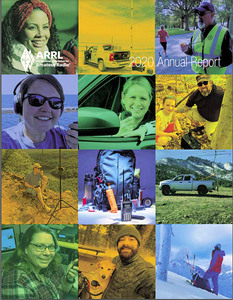 gatherings looked different, as videoconferencing became the new way to conduct business and get together."
gatherings looked different, as videoconferencing became the new way to conduct business and get together."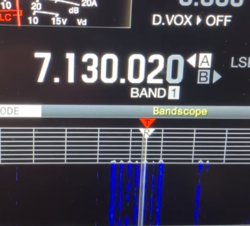 popping noise. The apparent jamming showed up after anti-government protesters took to the streets in Cuba, followed by a government crackdown. So far, there's no proven connection between the jamming and the protests, as evidence has been circumstantial. DX spots suggest that Cuban hams are on the air on SSB but do appear rare on 40 meters. A lot of Cuban spots point to FT8 activity. The jamming issue has drawn the attention of the FCC, which is looking into the matter, according to one tech publication.
popping noise. The apparent jamming showed up after anti-government protesters took to the streets in Cuba, followed by a government crackdown. So far, there's no proven connection between the jamming and the protests, as evidence has been circumstantial. DX spots suggest that Cuban hams are on the air on SSB but do appear rare on 40 meters. A lot of Cuban spots point to FT8 activity. The jamming issue has drawn the attention of the FCC, which is looking into the matter, according to one tech publication. Outside of ham radio, the ability to connect with some social media sites and even with the internet inside Cuba has been reportedly tricky. Connecting to the Federación de Radioaficionados de Cuba (
Outside of ham radio, the ability to connect with some social media sites and even with the internet inside Cuba has been reportedly tricky. Connecting to the Federación de Radioaficionados de Cuba ( Learning with High-Altitude Balloons -- Jack McElroy, KM4ZIA, and Audrey McElroy, KM4BUN / Thursday, July 22, 2021 @ 3:30 PM EDT (1930 UTC)
Learning with High-Altitude Balloons -- Jack McElroy, KM4ZIA, and Audrey McElroy, KM4BUN / Thursday, July 22, 2021 @ 3:30 PM EDT (1930 UTC)
 Court Judge Howard Speicher reversed the Zoning Board of Appeals' decision and ordered the town building commissioner to reinstate the permit.
Court Judge Howard Speicher reversed the Zoning Board of Appeals' decision and ordered the town building commissioner to reinstate the permit.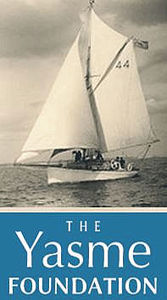 The
The .jpg) After months of negotiations with the new Coral Island Management Authority, the HARAOA
After months of negotiations with the new Coral Island Management Authority, the HARAOA 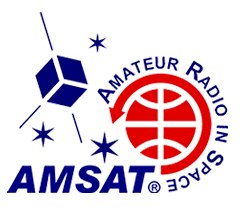 AMSAT-NA has issued its first call for papers for the 39th Annual AMSAT Space Symposium. The event is set for October 29 - 31, 2021, at the Crowne Plaza AiRE hotel in Bloomington, Minnesota. Proposals for symposium presentations are invited on any topic of interest to the amateur satellite community. A tentative presentation title is requested, with final copy submitted by October 18 for inclusion in the symposium Proceedings.
AMSAT-NA has issued its first call for papers for the 39th Annual AMSAT Space Symposium. The event is set for October 29 - 31, 2021, at the Crowne Plaza AiRE hotel in Bloomington, Minnesota. Proposals for symposium presentations are invited on any topic of interest to the amateur satellite community. A tentative presentation title is requested, with final copy submitted by October 18 for inclusion in the symposium Proceedings. .png) Over-the-horizon radars are operating with impunity in ham radio allocations. In its
Over-the-horizon radars are operating with impunity in ham radio allocations. In its 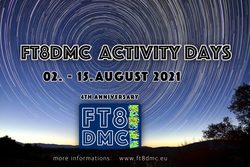 Many stations will take to the airwaves August 2 - 15 to celebrate the
Many stations will take to the airwaves August 2 - 15 to celebrate the  AO-109 (RadFxSat-2/AMSAT Fox-1E) is now open for amateur use. AMSAT's Engineering and Operations Teams advise operators to use efficient modes for making contacts, such as CW or FT4, because issues with the satellite make SSB voice contacts "challenging at best." An article in the May/June 2021 issue (Vol. 44, No. 3) of The AMSAT Journal details the various attempts to characterize AO-109 and its apparent problems. -- Thanks to Jerry Buxton, NØJY
AO-109 (RadFxSat-2/AMSAT Fox-1E) is now open for amateur use. AMSAT's Engineering and Operations Teams advise operators to use efficient modes for making contacts, such as CW or FT4, because issues with the satellite make SSB voice contacts "challenging at best." An article in the May/June 2021 issue (Vol. 44, No. 3) of The AMSAT Journal details the various attempts to characterize AO-109 and its apparent problems. -- Thanks to Jerry Buxton, NØJY.jpg) DX Engineering has acquired Top Ten Devices. The new owner will manufacture and distribute three of Top Ten Devices' signature products under the Top Ten Devices brand -- the A/B Station Selector, the Op Swapper, and the Band Aide Band Decoder. Formed by Dave Hawes, N3RD, and George Cutsogeorge, W2VJN, in 1991, Top Ten Devices built a strong reputation for producing high-performance and affordable equipment for the amateur radio community. "DX Engineering is excited for the opportunity to carry on the legacy that the innovators at Top Ten Devices have built over the past 3 decades," said DX Engineering CEO Tim Duffy, K3LR.
DX Engineering has acquired Top Ten Devices. The new owner will manufacture and distribute three of Top Ten Devices' signature products under the Top Ten Devices brand -- the A/B Station Selector, the Op Swapper, and the Band Aide Band Decoder. Formed by Dave Hawes, N3RD, and George Cutsogeorge, W2VJN, in 1991, Top Ten Devices built a strong reputation for producing high-performance and affordable equipment for the amateur radio community. "DX Engineering is excited for the opportunity to carry on the legacy that the innovators at Top Ten Devices have built over the past 3 decades," said DX Engineering CEO Tim Duffy, K3LR. titude and planetary A index averages at 6.4.
titude and planetary A index averages at 6.4.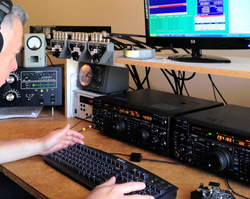 August 1 -- SARL HF Phone Contest
August 1 -- SARL HF Phone Contest.jpg)








